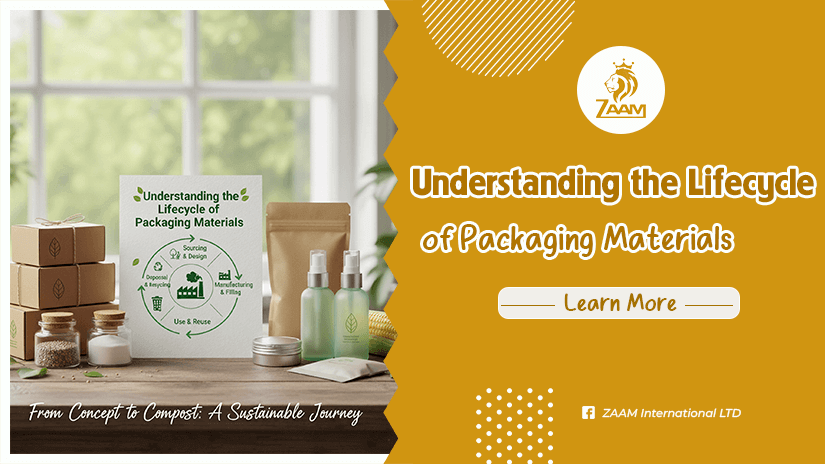Packaging Life Cycle 2026 – Stages, Sustainability & Best Practices Explained Leave a comment
In today’s business world, packaging is more than just a way to protect products — it’s a communication tool. Especially for brands using custom promotional packaging life cycle, understanding the lifecycle of packaging materials helps create designs that are not only beautiful but also sustainable.
This article explains how packaging materials move through their life cycle, why it matters for the environment, and how brands like Zaam International can help you make smarter, eco-friendly choices.
What Is the Packaging Lifecycle?
The packaging life cycle refers to the journey a package goes through — from raw material to disposal or recycling. Understanding this process helps businesses see how every stage affects the planet and how to design better packaging solutions.
There are five main stages in the packaging life cycle:
- Raw Material Extraction – This is the first stage, where natural resources (like paper from trees or plastic from petroleum) are collected.
- Packaging Production Process – The materials are turned into packaging forms such as bottles, jars, boxes, or pouches.
- Transportation and Distribution – The packaging is used to store and ship products to customers or stores.
- Usage Stage – Consumers use the product and may reuse the packaging (for example, reusable jars or tins).
- End-of-Life Stage – The packaging is thrown away, recycled, or reused. This is where packaging waste management and the circular economy in packaging play a key role.
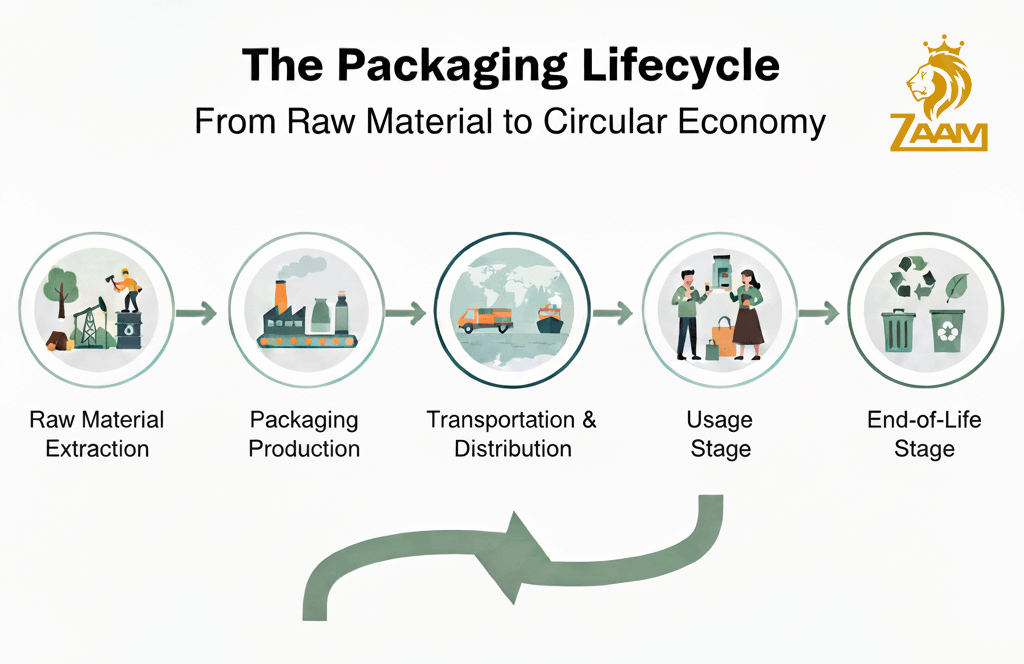
Why Understanding the Lifecycle Matters
Knowing how packaging moves through its life cycle helps companies make smarter decisions about materials and design.
- Reduce waste: Businesses can choose recyclable or reusable materials to limit landfill waste.
- Save energy: Using recycled materials in the packaging production process often uses less energy than creating new materials.
- Improve brand image: Modern consumers care about sustainability. Using eco-friendly packaging materials can make your brand more trusted and appealing.
Sustainable Packaging Lifecycle
A sustainable packaging life cycle focuses on reducing environmental impact at every stage.
That means:
- Choosing renewable or recyclable materials
- Designing for reuse or easy recycling
- Using less energy in production and transport
- Supporting a circular economy in packaging — where packaging materials are reused and recycled instead of wasted
When businesses apply this thinking to custom promotional packaging, they not only support the planet but also strengthen brand value. For example, gift boxes or event packaging made from recycled paper or biodegradable materials can still look premium and professional.
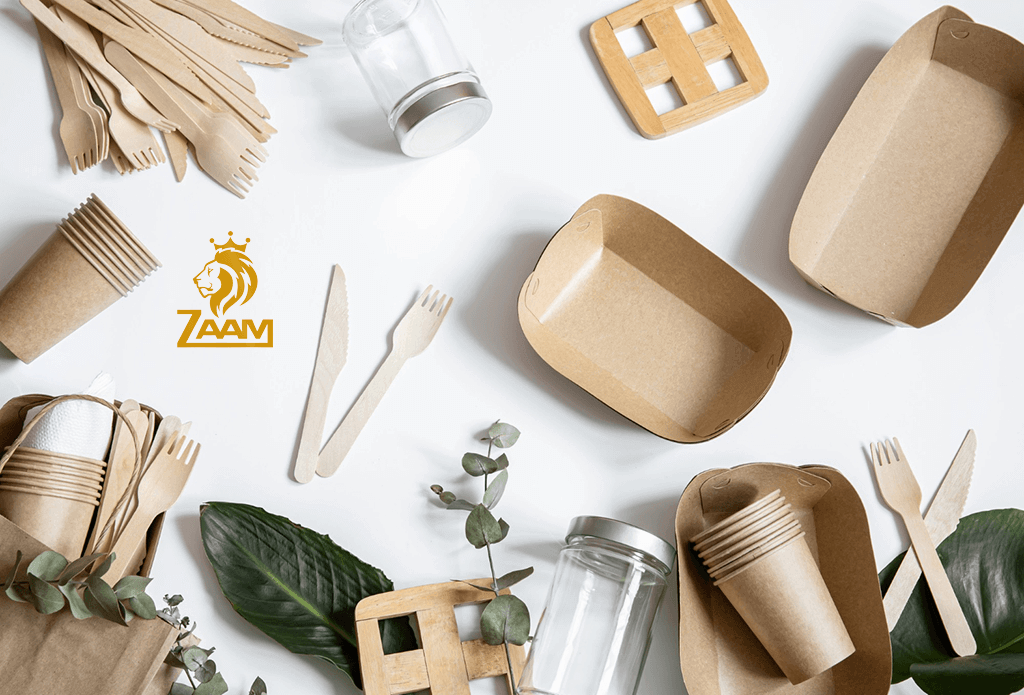
Eco-Friendly Materials for Custom Promotional Packaging
To build a more sustainable packaging life cycle, the choice of material matters most. Some popular eco-friendly packaging materials include:
- Recycled paper and cardboard – perfect for boxes, sleeves, and gift packaging.
- Biodegradable plastics – made from plant-based materials like corn starch.
- Glass and tin – reusable and recyclable, ideal for cosmetic or food packaging.
- Compostable bags and films – great for small or lightweight products.
When you use these materials in custom promotional packaging, you reduce your carbon footprint while keeping your brand presentation elegant and memorable.
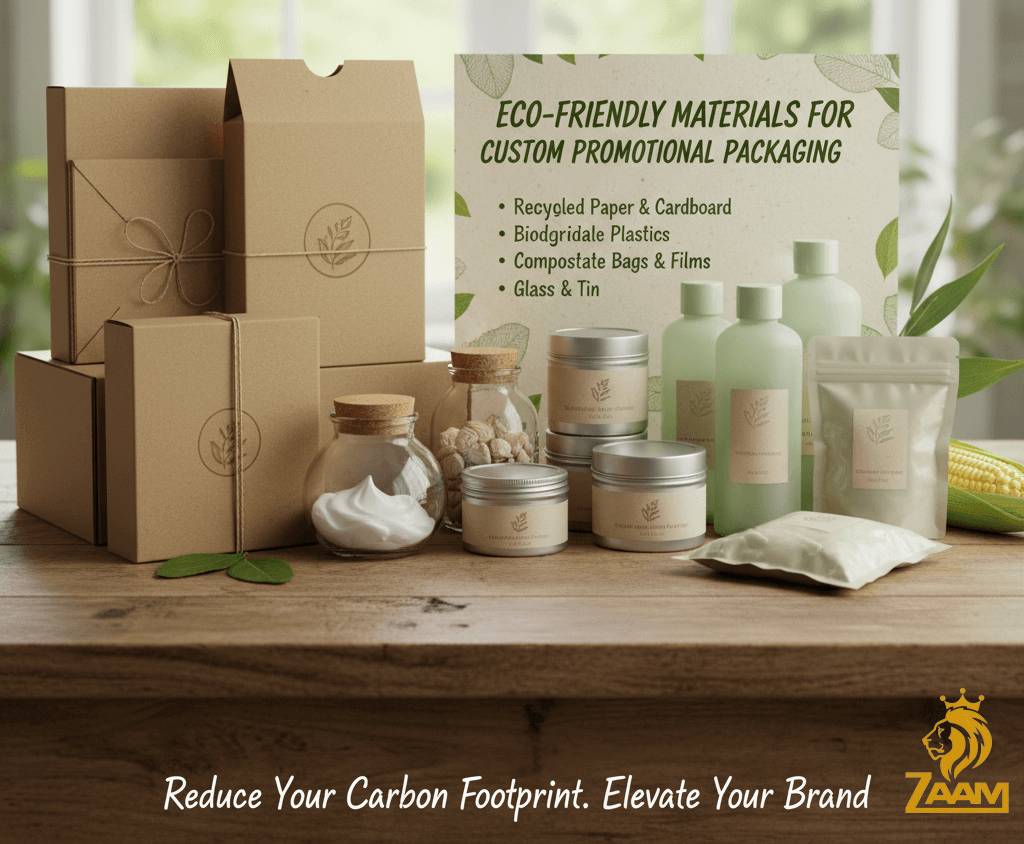
Eco-Friendly Materials for Custom Promotional Packaging
To build a more sustainable packaging life cycle, the choice of material matters most. Some popular eco-friendly packaging materials include:
- Recycled paper and cardboard – perfect for boxes, sleeves, and gift packaging.
- Biodegradable plastics – made from plant-based materials like corn starch.
- Glass and tin – reusable and recyclable, ideal for cosmetic or food packaging.
- Compostable bags and films – great for small or lightweight products.
When you use these materials in custom promotional packaging, you reduce your carbon footprint while keeping your brand presentation elegant and memorable.
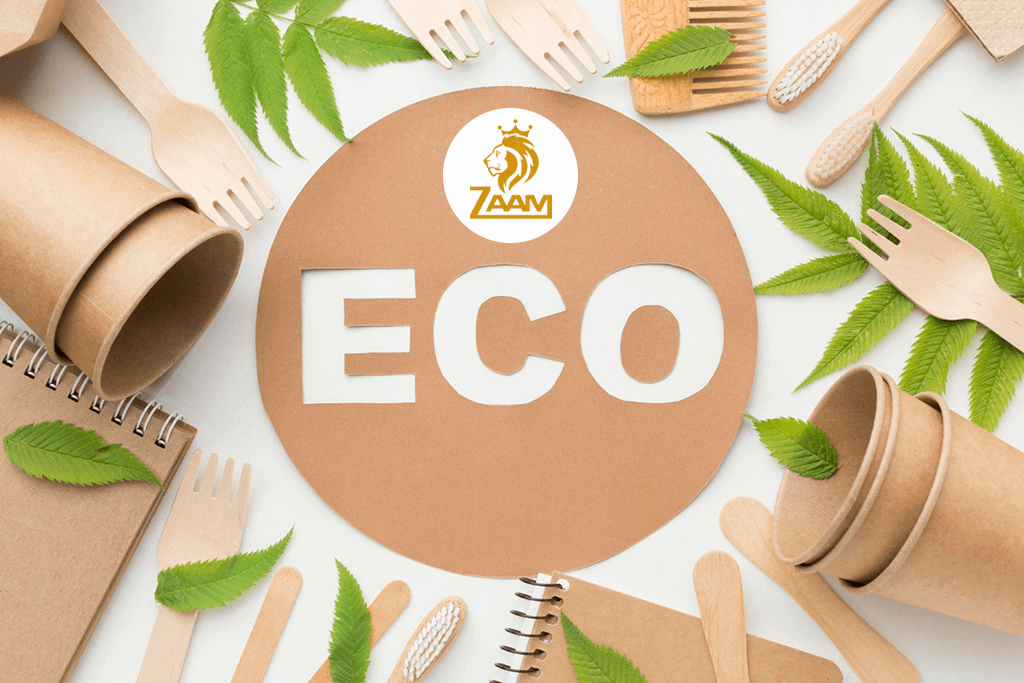
How Zaam Packaging Supports a Sustainable Lifecycle
At Zaam Packaging, we understand the importance of creating packaging that balances beauty, function, and responsibility.
Our team designs and manufactures custom promotional packaging using high-quality materials that meet both brand and environmental goals.
Whether you need plastic, tin, paper, or glass packaging, we help you:
- Choose sustainable materials
- Optimize the packaging production process
- Reduce packaging waste through smart design
- Create packaging that represents your brand and respects the planet
With Zaam, you get a partner that supports the full packaging life cycle — from concept to finished product — in a more eco-friendly way.
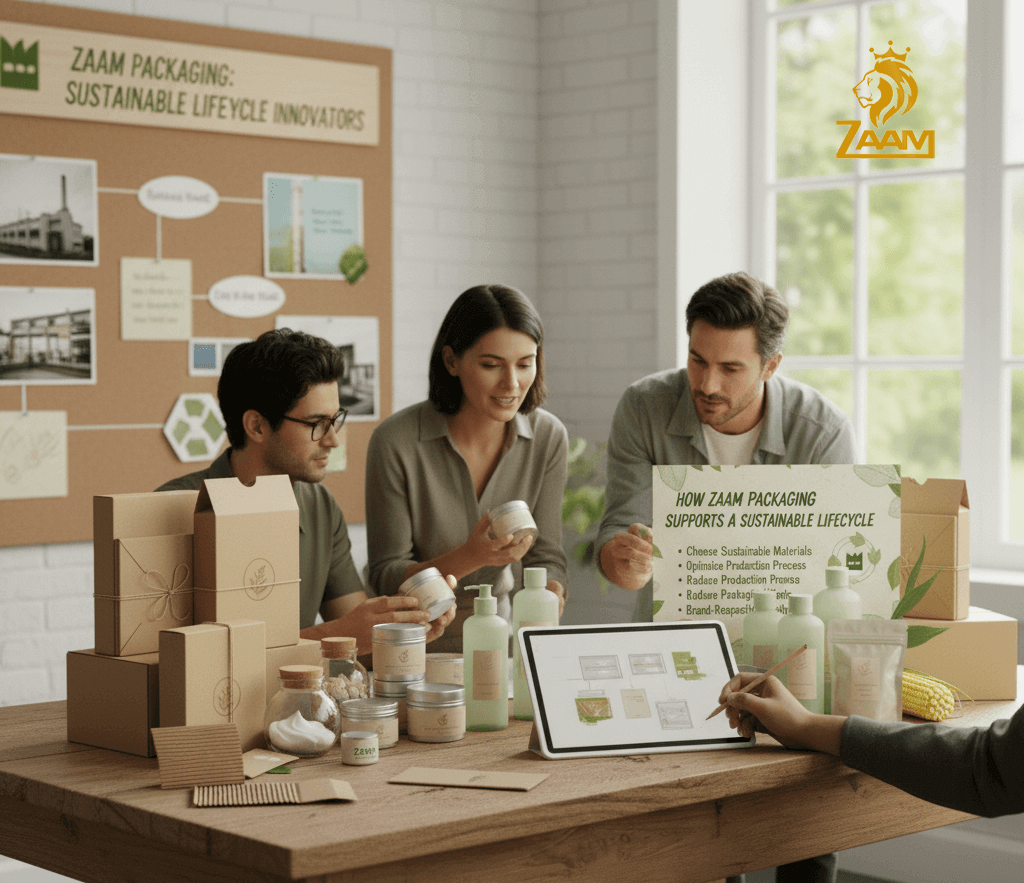
Conclusion
Understanding the lifecycle of packaging materials helps businesses make responsible choices. By selecting sustainable materials and working with partners like Zaam Packaging, you can design custom promotional packaging that stands out — not only for its look but also for its care for the planet.
Because great packaging doesn’t end when the product is opened — it begins a new life when it’s reused, recycled, or remembered.
FAQs
1. What is a packaging life cycle?
It’s the process that packaging goes through — from raw material extraction to production, use, and recycling or disposal.
2. Why is sustainable packaging important?
It helps protect the environment, reduces waste, and builds a positive image for your brand.
3. What materials are best for eco-friendly packaging?
Recycled paper, biodegradable plastic, tin, and glass are excellent options for creating sustainable packaging.

